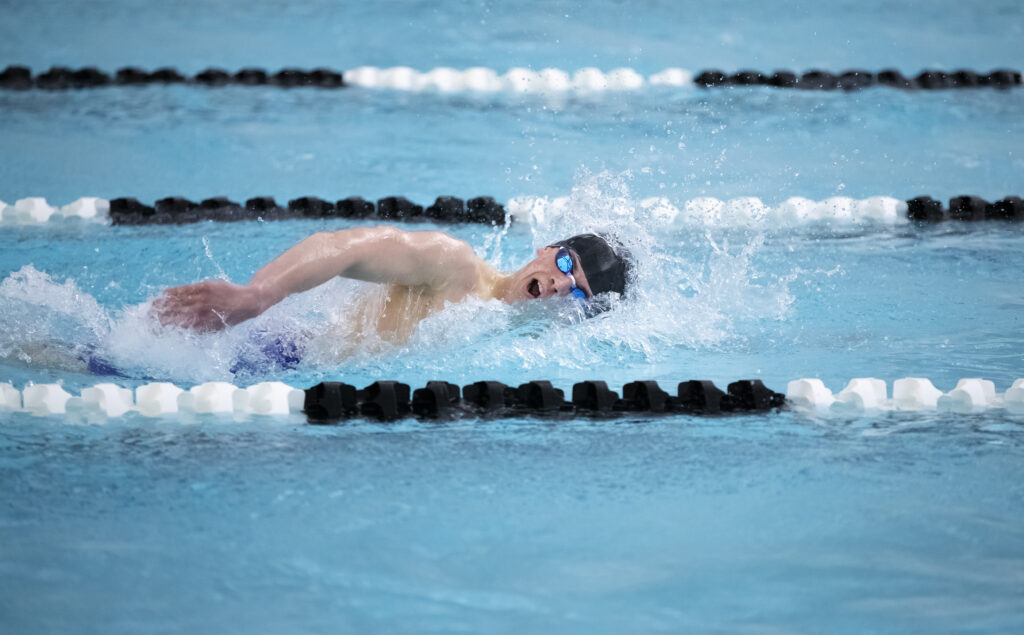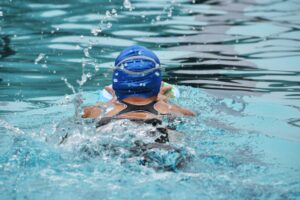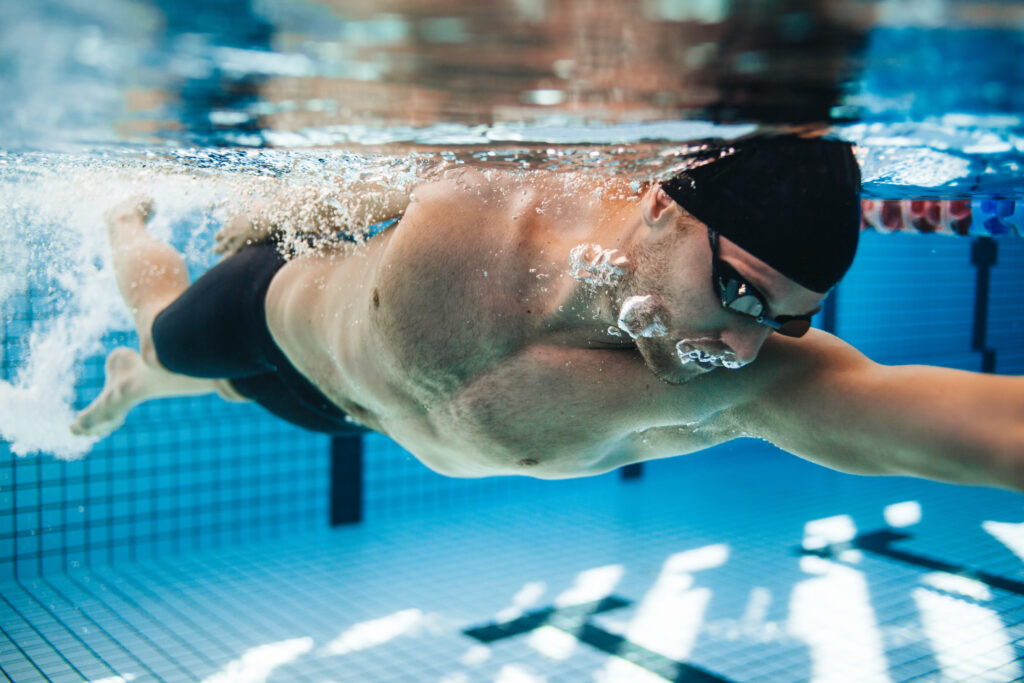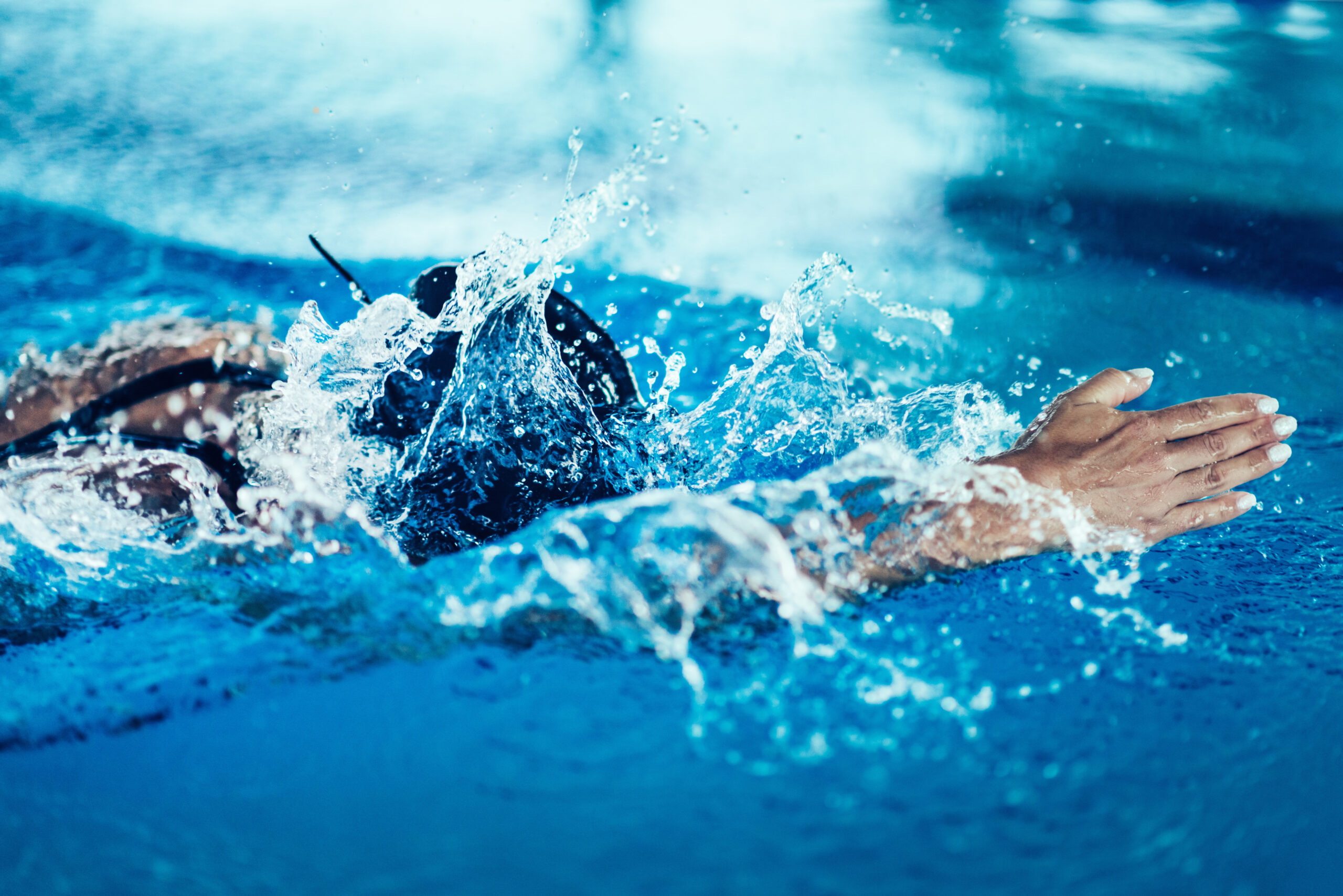
Most beginner swimmers aren’t taught the value of foundational techniques. Their importance is often overlooked due to their perceived simplicity, but these techniques ensure new swimmers learn the correct techniques and skills that will set them up for life.
So which swimming techniques for beginners should you focus on during your swimming journey? Read below to find out!
Breathing
Are you surprised this is a technique? It’s actually one of the most crucial swimming techniques for beginners! Why? Well, swimming requires you to have your face in the water, effectively preventing you from doing what comes naturally – breathing. As a new swimmer, you must adapt to a new way of breathing.
Since our ability to breathe as we usually would is limited under the water, you need to train your lungs. Your breathing technique impacts how you swim (performance), how buoyant you remain while you swim, balance and alignment, propulsion, and oxygen delivery throughout the body.
The secret to getting better at controlled breathing is increasing your lung capacity. Expanding your lung capacity enables you to hold your breath for more extended periods (exhale for longer while performing a stroke) and take in more air on the inhale.
The first thing you must know and practice is breathing in through your mouth. Use only your mouth to inhale and the mouth and nose to exhale slowly. You’ll want to ensure you exhale fully before taking your next breath. The inhalation is quick, while the exhale through the nose can take a few strokes. Breath control relies heavily on timing and synchronization. As Terry Laughlin explains, you should never hold your breath; begin the process of exhaling as soon as you finish inhaling.
Breathing Mechanics: An Example
On your third stroke, inhale through your mouth. Then, as you put your head back in the water, slowly begin to exhale through your nose. If you find that you do not have enough air to exhale for the entire duration between inhales, wait for 1-2 strokes before you begin exhaling.
Practice Makes Perfect.
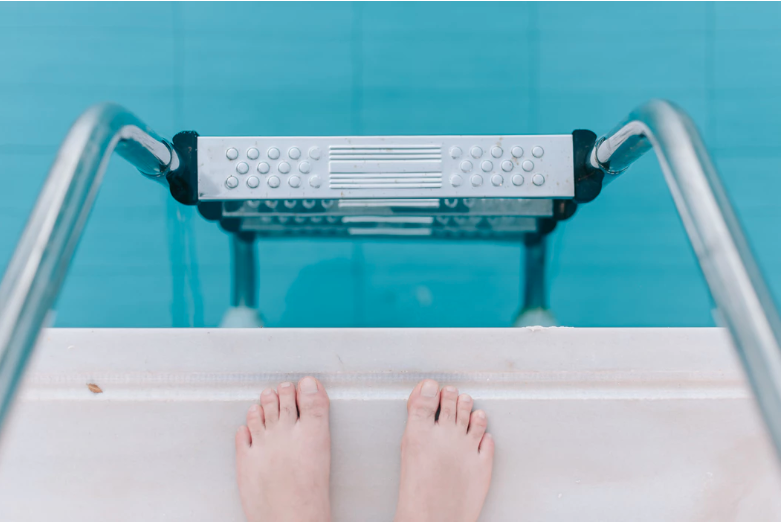
As a beginner, you learn many new swimming skills, often one after another. Taking everything you’ve learned and bringing it all together is challenging, especially if you’re looking to teach yourself, so take it slow and practice each skill relentlessly. While you may be excited to start swimming, avoid rushing through each lesson. After you learn a new skill, focus on developing that skill further and improving your performance.
While you can do this independently, it might take longer to master or refine your technique. Consider swimming lessons from a qualified instructor. Instructors watch you as you swim, enabling them to expertly assess you and identify areas in which you need improvement. An instructor or coach can teach you proper techniques and provide feedback. This kind of instruction is invaluable to a new swimmer. Expert guidance and instruction shorten the time it takes to perfect your technique.
Coordination
Practicing coordination between breathing, kicking, gliding, and rotating the arms is one of the many swimming techniques for beginners that new swimmers will try to bypass. But, becoming a coordinated swimmer is difficult, especially when practicing independently. With your face in the water, it’s hard to know what mistakes you’re making – if any.
Begin to combine one skill with another instead of trying to perform it all in one go. For example, start with combining your breathing technique with your freestyle arms while remaining stationary in the shallow end. Build your way up to incorporating all the elements in concert.
Coordination is an essential technique for efficient swimming. You’ll also look much more graceful in the water – just like a pro swimmer!
Alignment is Key
Understanding the importance of spinal alignment, maintaining a streamlined position, and learning how to swim/glide efficiently in the beginning, is crucial. It’s a foundational swimming technique used with every type of stroke, but it’s easy to overlook — much like proper breathing technique.
An excellent way to improve alignment in the pool is to engage the hips while swimming. For example, try swimming freestyle arms without leg kicks, using just your arms to pull you through the water. You’ll quickly notice a zig-zag swimming pattern if your alignment is off! Keeping your legs zipped together and allowing for a slight rotation in the hips should help keep you centered. Pull Buoys can also be a useful piece of equipment to help with this drill.
Many new swimmers begin learning how to swim with their heads above the water, but this teaches poor form in the long run and results in sinking hips and higher resistance. A streamlined form helps reduce drag, requiring less effort and improving lap times! So, once the foundations of breath control have been learned, it’s best to start swimming with faces parallel to the pool floor as soon as possible, as this naturally helps with alignment.

